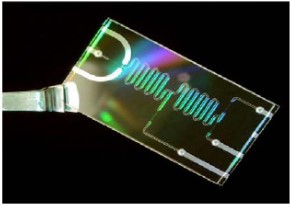→ Project Reference: RTC-2015-3348-2
![]()
Summary
The objective of this project is the development of a new device for the detection of contaminants in food based on innovative technologies that combine the use of specific antibodies, microfluidics and electronics. The integration of these technologies will allow the analysis of food very easily, even for users outside a laboratory, obtaining the results in a few minutes and at a reasonable cost to the end user.
Following recent food crises in Europe in recent years, such as bovine spongiform encephalopathy, detection of dioxins in chickens, acrylamide in fried foods, hydrocarbons in sunflower oil, and more recently the 50 deaths in Germany due to the consumption of soybean sprouts contaminated with a verotoxigenic toxin-producing microorganism. Consequently, food safety has become one of the current priorities of European health authorities.
Thus, in recent years there has been a great demand to develop rapid, reliable, sensitive and easy-to-use methods for the analysis of biotic and abiotic contaminants in foods.
This project aims to design a portable and low cost device capable of detecting several analytes of interest in the food safety area. As a model, several allergens (milk and egg) and the two main mycotoxins (aflatoxins and ochratoxin A) have been selected.


 Español
Español